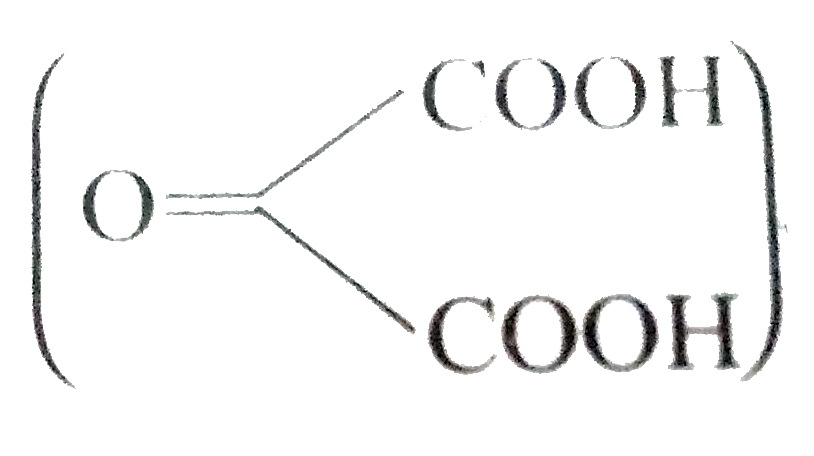An organic compound (A) C6H10 on reduction, first give (B) C6H12 and finally (C) C6H14 (A) on reaction with ozone followed by hydrolysis is presence of Zn gives two aldehydes C2H4O (D) and C2H2O2 (E) Oxdation of (B) with acidified KMnO4 gives acid (F) C3H6O2 Determine structures of (A) to (F) with proper reasoning.
Step by step video, text & image solution for An organic compound (A) C_(6)H_(10) on reduction, first give (B) C_(6)H_(12) and finally (C) C_(6)H_(14) (A) on reaction with ozone followed by hydrolysis is presence of Zn gives two aldehydes C_(2)H_(4)O (D) and C_(2)H_(2)O_(2) (E) Oxdation of (B) with acidified KMnO_(4) gives acid (F) C_(3)H_(6)O_(2) Determine structures of (A) to (F) with proper reasoning. by Chemistry experts to help you in doubts & scoring excellent marks in Class 11 exams.
Topper's Solved these Questions
- BOOK - NARAYNACHAPTER - ALKENESEXERCISE - Straight Objective Questions26videos
ALKENES
- BOOK - NARAYNACHAPTER - ALKENESEXERCISE - Matrix Match Type3videos
ALKENES
- BOOK - NARAYNACHAPTER - ALKENESEXERCISE - level-52videos
ALKENES
- BOOK - NARAYNACHAPTER - ALKANESEXERCISE - Integer Answer Type7videos
ALKANES
- BOOK - NARAYNACHAPTER - ALKYNESEXERCISE - Level-6112videos
ALKYNES
Similar Questions
An organic compound [A] C6H10, on reduction first gives [B] C6H12, and finally [C] C6H14. [A] on ozonolysis followed by hydrolysis gives two aldehydes [D] C2H4O, and [E] C2H2O. Oxidation of [B] with acidified KMnO4 gives acid [F] C4H8O2. Determine the structures of the compounds [A] to [F] with proper reasoning.
View SolutionAn organic compound A(C6H10) on reduction first gives B(C6H12) and finally C(C6H14). Compound A on ozonolysis followed by hydrolysis gives two aldehydes D(C2H4O) and E(C2H2O2). Oxidation of B with acidified KMnO4 gives the acid F(C4H8O2). determine the structures of the compounds A to F with reasoning.
View Solution
Knowledge Check
- Question 1 - Select One
A compound 'X' on ozonolysis followed by reduction gives an aldehyde, C2H4O and 2-butanone. Compound 'X' is:
A3 - methylpentane - 2B3 - methylpentene - 3C3 - methylhexene - 3D3 - ethylpentene - 3 - Question 2 - Select One
A compound 'X' on ozonolysis followed by reduction gives an aldehyde, C2H4O and 2-butanoic. Compound 'X' is:
A3-methylpent-2-eneB3-methylpent-3-eneC3-methylhex-3-eneD3-ethylpent-3-ene - Question 3 - Select One
An organic compound C6)H12(X) on reduction gives C6H14(Y). X on ozonolysis gives two aldehydes C2H4O(I)andC4H8O(II). Identify the compounds X, Y and aldehydes (I) and (II).
AX=CH3CH=CHCH2CH2CH3,Y=CH3(CH2)4CH3,(I)=CH3CHO,(II)=CH3(CH2)2CHOBX=CH3CH2CH=CHCH2CH3,Y=CH3(CH2)4CH3,(I)=CH3CHO,(II)=CH3CHOCX=CH3CH2CH2CH=CH2,Y=CH3(CH2)4CH3,(I)=HCHO,(II)=CH3(CH2)2CHODX=CH3(CH2)3CH3,(I)=CH3CHO,(II)=CH3CH2CHO
An organic compound [A] C6H10, on reduction first gives [B] C6H12, and finally [C] C6H14. [A] on ozonolysis followed by hydrolysis gives two aldehydes [D] C2H4O, and [E] C2H2O. Oxidation of [B] with acidified KMnO4 gives acid [F] C4H8O2. Determine the structures of the compounds [A] to [F] with proper reasoning.
View SolutionOn ozonolysis, an organic compound (A) C6H10 gives two aldehyde (B) C2H4O and (C ) C2H2O2. Determine the structure of A,B and C.
View SolutionAn organic compound (A) of molecular formula C5H8 when treated with Na in liquid ammonia followed by reaction with s-Propyl iodide yeidls (B) C8H12 (A) gives a ketone C5H10O (e) when treated with dil H2SO4 and HgSO4 (B) on oxidation with alkaline KMnO4 gives two isomeric acids (D) and (E) C4H8O2. Give structures of compounds (A) to (E) with proper reasoning .
View Solutiona) Compound (A) C8H12 on oxidation gives an acid (B) C4H6O2. One molecule of compound (A) reacts with 3 mole of H2 in presence of platinum catalyst to give octane. Identify compound (A).
 View Solution
View SolutionAn organic compound (A) (C5H7OCl) reacts rapidly with ethanol to give (B) (C7H12O2). (A) also reacts with water to produce an acid which reacts with bromine to give (C ) (C5H8Br2O2). (B) on boiling with H2SO4 forms an acid (D). When (D) is oxidised with KMnO4 an acid (E ) (C4H6O3) is produced. On mild heating, (E ) gives (F) (C3H6O) which cannot be oxidised by ammoniacal AgNO3. Identify the compounds (A) to (F).
View Solution

